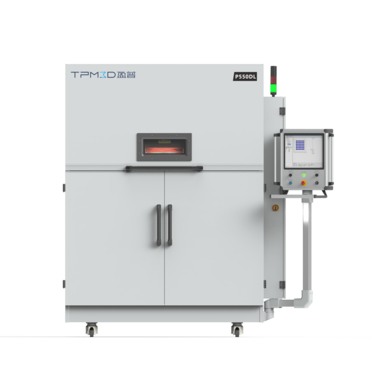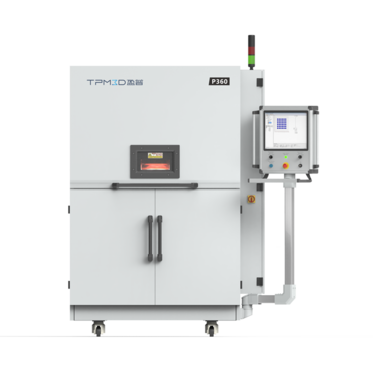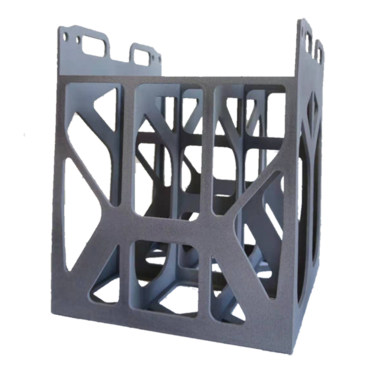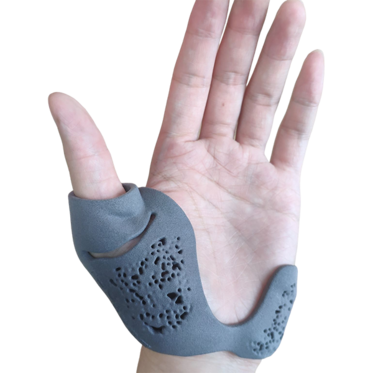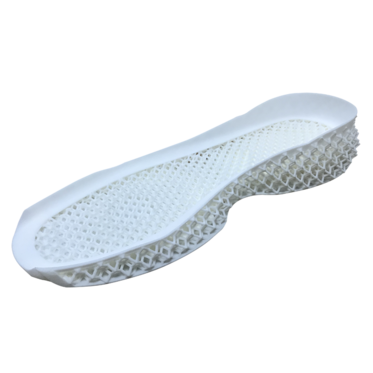Among various 3D printing technologies, selective laser sintering technology (SLS) is more suitable to make rehabilitation assistive appliance, because it uses polymer as the base materials, and can be printed with diverse materials, such as PA11, PA12, PA6, TPU, composite polymers, etc. Besides, printed parts have stronger mechanical property and durability. The printed parts can be smoothed by chemical vapor to have stronger toughness, waterproof, sweatproof and prevent the growth of bacteria.
SLS technology can be used to print the products like orthosis, rehabilitation headrest, insoles, artificial limbs and it can meet the requirement of small batch production base on its fast-printing speed. It can be said to the magic weapon to customize rehabilitation assistive applicant.
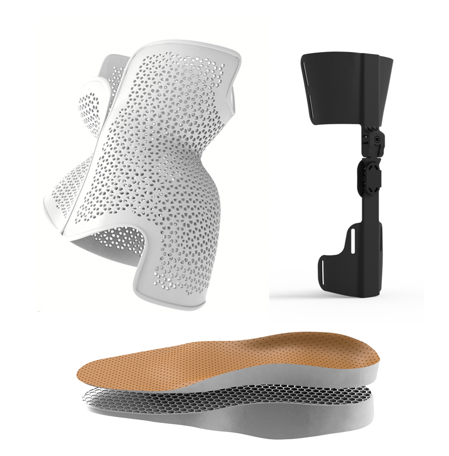
① Ankle Foot Orthoses
The traditional gypsum orthosis has the disadvantages of low efficiency of molding and manufacturing, high requirements for doctors' technical skills, chaotic working environment, limited fit, and single and airtight appearance.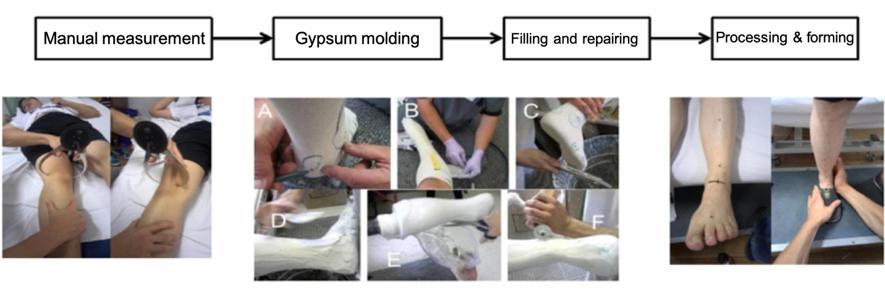
3D printed ankle foot orthosis, applying the reverse engineering and rapid prototype technology, greatly reduce the difficulty and producing time of the personalized ankle foot orthosis, and compared with customized ankle foot orthosis, it can achieve to the same or even better effect such as lightweight, and hollowed design, etc. The performance of almost injection molded nylon materials ensures the durability of the product.
② Scoliosis orthosis
The traditional production of orthosis needs to use the gypsum to mold patient’s body, combined with X-ray. The process is very cumbersome for patients and chiropractor, with low efficiency. CT or 3D scanning combined with 3D printing will greatly reduce the work intensity of chiropractor and improve production efficiency.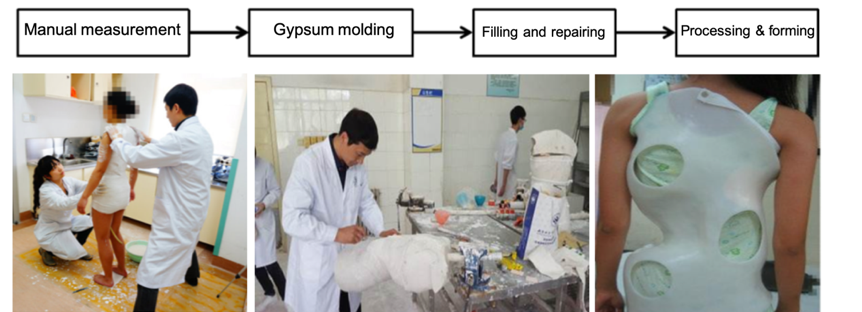
SLS 3D printing technology can be used to make products that fully fit the soft tissue characteristics of patients, while support the addition of a large number of hollow structures, which can reduce the weight of braces and increase the air permeability.
③ Insole
Through foot measurement, plantar pressure test and gait analysis, personalized foot orthopedic insoles can be printed for the patients with foot diseases, and alleviate the problem of unstable walking for the patients with cerebral palsy, diabetes, foot varus and valgus, flat feet and others. TPM 3D joined hands with Shanghai Jiao Tong University to carry out the research on this area by using advanced printing technology and motion capture gait analysis, and accelerate the development of related products.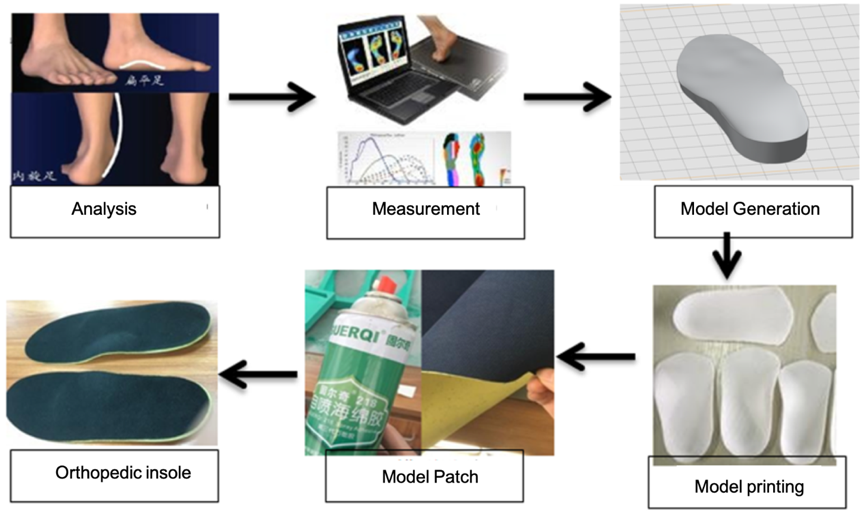
④ Headrest
The TPU rehabilitation headrest, made by 3D scanning + X-ray + SLS technology, perfectly adapts to everyone’s neck curve. Compared to foaming latex, TPU material has a stronger support force and less deformation when suffer pressure. It also will not deform for a long-term usage, which can effectively help users alleviate neck fatigue and achieve the effect of slowly correcting the curve of the cervical spine.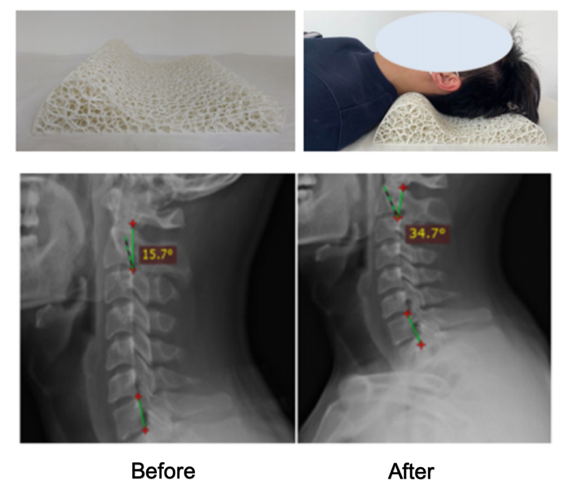

Some Rehabilitation Assistive Appliance Produced by TPM3D
① Ankle Foot Orthoses
The traditional gypsum orthosis has the disadvantages of low efficiency of molding and manufacturing, high requirements for doctors' technical skills, chaotic working environment, limited fit, and single and airtight appearance.

Manufacturing Process of Traditional Gypsum Ankle Foot Orthosis
3D printed ankle foot orthosis, applying the reverse engineering and rapid prototype technology, greatly reduce the difficulty and producing time of the personalized ankle foot orthosis, and compared with customized ankle foot orthosis, it can achieve to the same or even better effect such as lightweight, and hollowed design, etc. The performance of almost injection molded nylon materials ensures the durability of the product.

Ankle Foot Orthosis Made by 3D Scanning and 3D Printing Technology
② Scoliosis orthosis
The traditional production of orthosis needs to use the gypsum to mold patient’s body, combined with X-ray. The process is very cumbersome for patients and chiropractor, with low efficiency. CT or 3D scanning combined with 3D printing will greatly reduce the work intensity of chiropractor and improve production efficiency.

Complicated Production Process of Traditional Gypsum Spinal Orthosis, and Poor Experience for Patients.
SLS 3D printing technology can be used to make products that fully fit the soft tissue characteristics of patients, while support the addition of a large number of hollow structures, which can reduce the weight of braces and increase the air permeability.

The Production Process of TPM3D SLS 3D Printing Spinal Orthosis Is Simple and The Wearing Experience Is Better.
③ Insole
Through foot measurement, plantar pressure test and gait analysis, personalized foot orthopedic insoles can be printed for the patients with foot diseases, and alleviate the problem of unstable walking for the patients with cerebral palsy, diabetes, foot varus and valgus, flat feet and others. TPM 3D joined hands with Shanghai Jiao Tong University to carry out the research on this area by using advanced printing technology and motion capture gait analysis, and accelerate the development of related products.

Manufacturing Process of TPM SLS 3D Printing Orthopedic Insole
④ Headrest
The TPU rehabilitation headrest, made by 3D scanning + X-ray + SLS technology, perfectly adapts to everyone’s neck curve. Compared to foaming latex, TPU material has a stronger support force and less deformation when suffer pressure. It also will not deform for a long-term usage, which can effectively help users alleviate neck fatigue and achieve the effect of slowly correcting the curve of the cervical spine.

Correction Effect of TPM SLS 3D Printing Rehabilitation Headrest on Neck Curve


